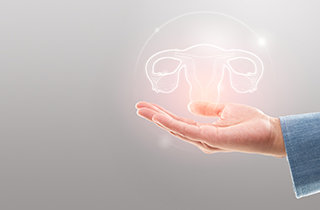Others
Tuberculosis and Its Connection with Other Diseases
By - 23 March 2023
Share this article
0
0 like

Tuberculosis (TB) is one of the world's leading causes of death, killing 15 lakh people in 2020, as reported by the World Health Organization (WHO). India was responsible for 34% of these causalities. Despite the human tragedy, a lot of us are even now unaware of this lethal but treatable disease. Every year on March 24, World Tuberculosis Day is observed to educate the public about tuberculosis. But to do so, we need to understand exactly what this disease is all about.
Tuberculosis: Understanding the essence of TB
TB is a bacterial infection spread through the air that typically affects the lungs. The infection, however, can also affect other parts of the body, including the brain, spine, bones, nervous system, abdomen, and kidneys. The ailment can be fatal if not diagnosed and treated promptly.
There are two types of tuberculosis:
- Latent Tuberculosis: The bacteria remain dormant within the human body with no symptoms. Though people with latent tuberculosis cannot transmit the pathogens to others, it can become active and cause illness.
- Active Tuberculosis: It occurs when bacteria infect the lung tissue or other organs in the body. Active tuberculosis patients are susceptible to passing on the pathogens to others. It can happen weeks or years after the initial bacterial infection.
Who’s the culprit?
Mycobacterium tuberculosis is the bacteria that causes tuberculosis. When someone with active tuberculosis sneezes, spits, coughs, or talks, bacteria-filled droplets are discharged into the environment, which can cause infection if inhaled.
Children with tuberculosis or extrapulmonary tuberculosis (TB infection which affects organs other than the lungs) usually don’t transmit the bacteria. Patients with tuberculosis who have been properly treated for at least 2 weeks are less likely to spread the bacteria.
How to recognize tuberculosis?
The symptoms of tuberculosis are usually determined by the organs affected. For example, spinal tuberculosis may cause back pain, and tuberculosis of the kidneys may result in blood in the urine. While the disease primarily affects the lungs, pulmonary tuberculosis symptoms include:
- Cough lasting for 3 weeks or more
- Pain in the chest
- Cough or spit containing blood
- Fatigue
- Sweating especially at night
- Loss of appetite
- Indescribable weight loss
Now that we know the signs of TB, it’s only logical to understand who is at risk of catching it, right? Let’s find out!
- Diabetes: Diabetes triples the danger of tuberculosis. The combination of unmanaged latent tuberculosis infection and diabetes raises the possibility of contracting tuberculosis.
- HIV: HIV-positive individuals are 29 times more likely to be diagnosed with tuberculosis (TB) than people who reside in the same nation and do not have HIV. TB is one of the top causes of hospitalization and death among HIV-positive adults and children, accounting for 1 in every 5 HIV-related deaths worldwide.
- Malnutrition: Malnutrition increases the risk of tuberculosis, and tuberculosis can lead to malnutrition. Malnutrition is thus frequently prevalent among TB patients.
Although not a disease, a habit that can increase your risk of developing Tb is smoking.
- Tobacco smoking: Smokers are nearly twice as prone to contracting tuberculosis and developing active disease. TB is aggravated by smoking at all stages of the disease. Second, it increases the likelihood of latent tuberculosis infection. Third, smokers are twice as likely to succumb to TB.
Since it’s a contagious disease, using the Apollo Life N95 Unisex Face Mask can help in preventing the spread of the disease.
Apollo Pharmacy Blood Glucose Monitoring System helps in detecting those spikes in your sugar levels, protecting you from any chances of contracting TB in the long run.
Apollo Pharmacy Vaporizer Steam Inhaler helps in taking care of your cold, cough, and many other symptoms which can trouble you during your illnesses.
These products are available at Apollo Pharmacy, both online and in-store.
Yes! We can end TB!
The initiative taken up by WHO on World Tuberculosis Day 2023, 'Yes! We Can End TB!,' conveys a message of hope that reversing the TB epidemic is doable through greater investment, faster adoption of new WHO guidelines, and adoption of advancements and accelerated action.
Dr. Robert Koch announced in 1882 that he had finally discovered the bacterial cell that causes tuberculosis, which paved the way for diagnosing and curing the disease.
Conclusion
TB is a serious infection that can be treated effectively. It can be managed through a variety of lifestyle changes, such as eating a healthy diet, avoiding alcohol and cigarettes, and taking medications as instructed.
Services
Others
Leave Comment
Services
Recommended for you

Others
The Impact of Flu on Monsoon
Flu transmission control is tougher during the monsoon season due to humidity and indoor activities. Practicing hygiene, following etiquette, and staying informed can mitigate flu impact and protect our health. #ApolloPharmacy #MonsoonFlu #FluCare #MonsoonIllness

Others
Healthy Food to Boost Winter Immunity
It's that time of the year when not just the temperatures dip but so does your immunity. Winters are known to give us a chill pill but did you know that cold weather also impacts your immune system? Yes, you heard it right! Now, this may have got you thinking, about how you suddenly start experiencing flu-like symptoms in winter and are mostly seen sneezing and coughing. Blame it all on the cool weather.

Others
Do PCOD and PCOS mean the same thing or are they different?
Do PCOD and PCOS mean the same thing or are they different?
Subscribe
Sign up for our free Health Library Daily Newsletter
Get doctor-approved health tips, news, and more.

